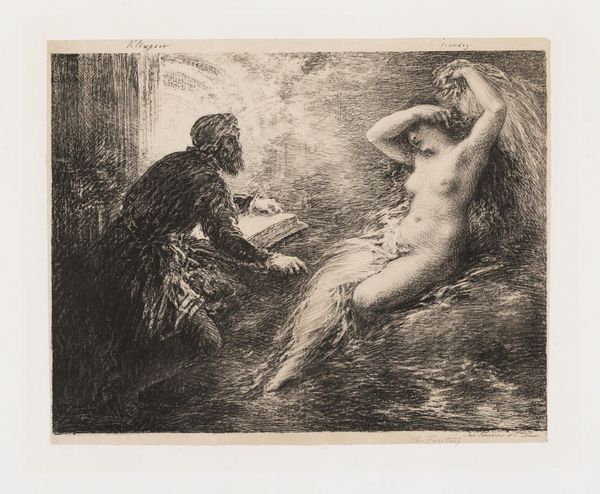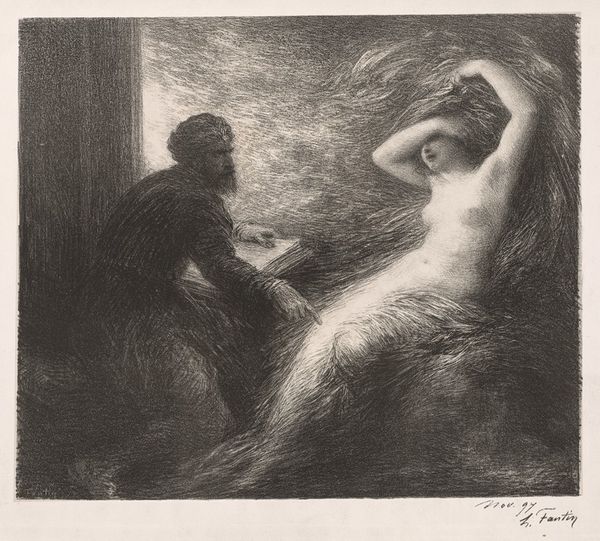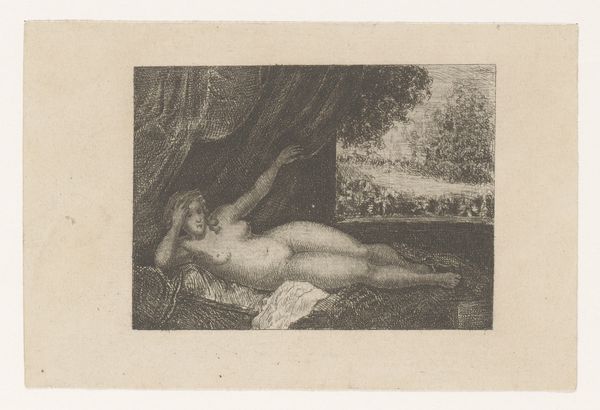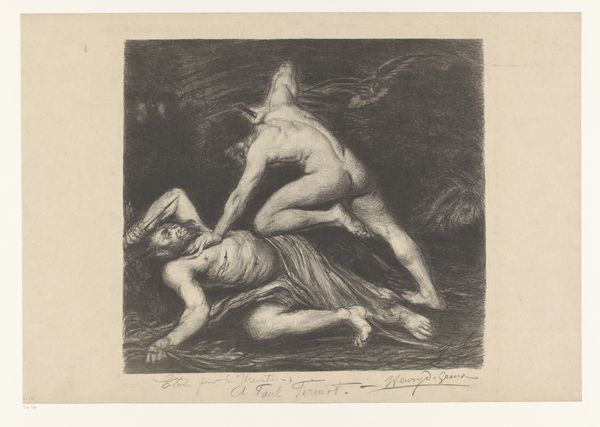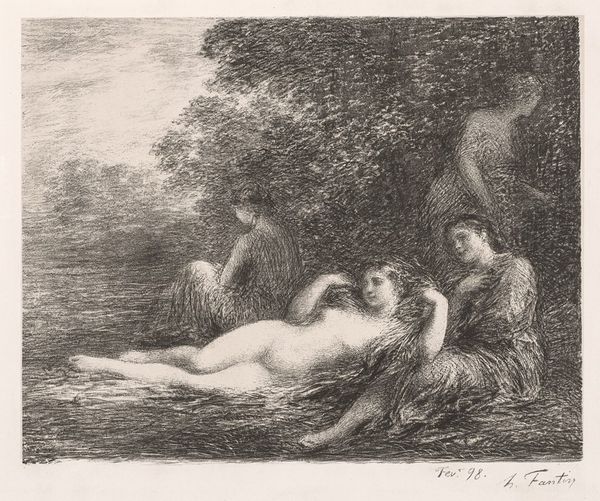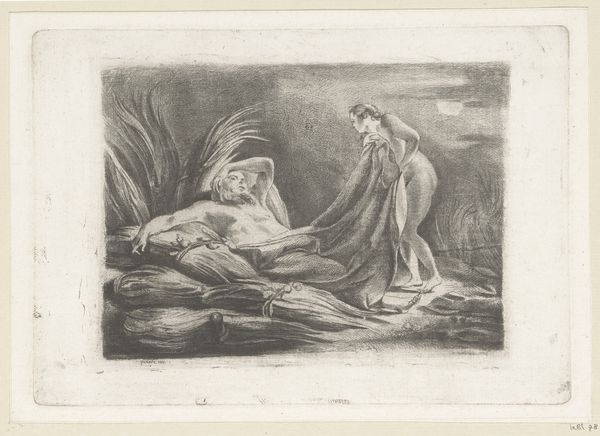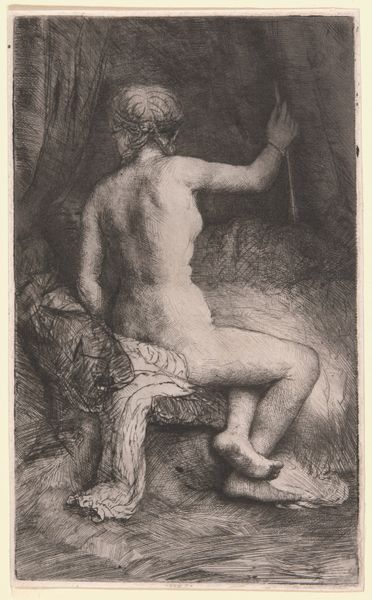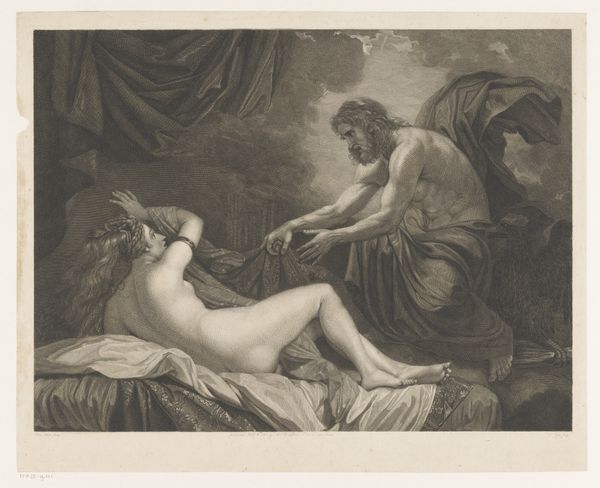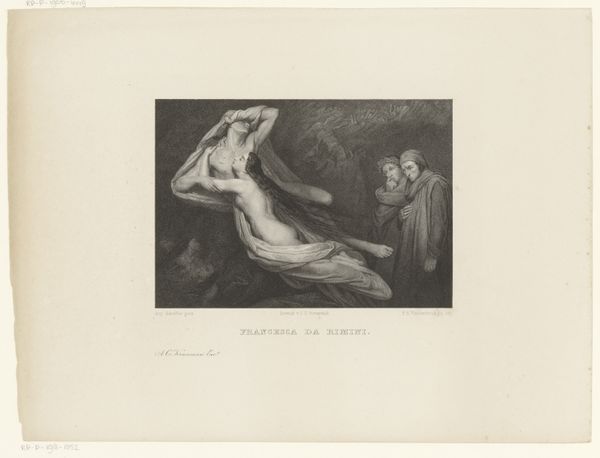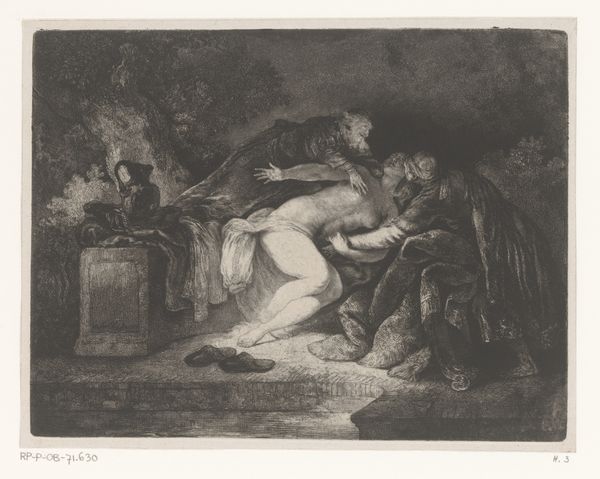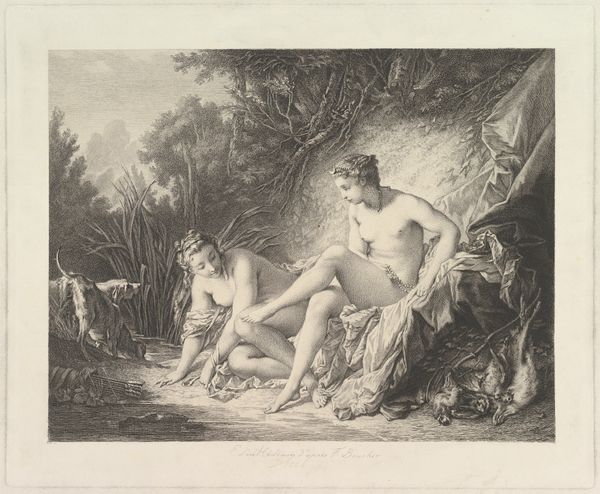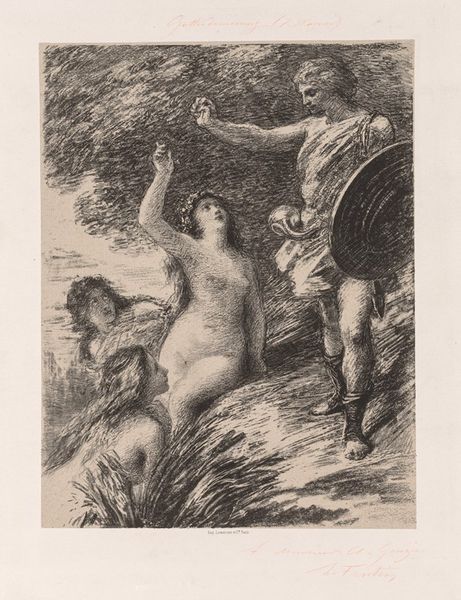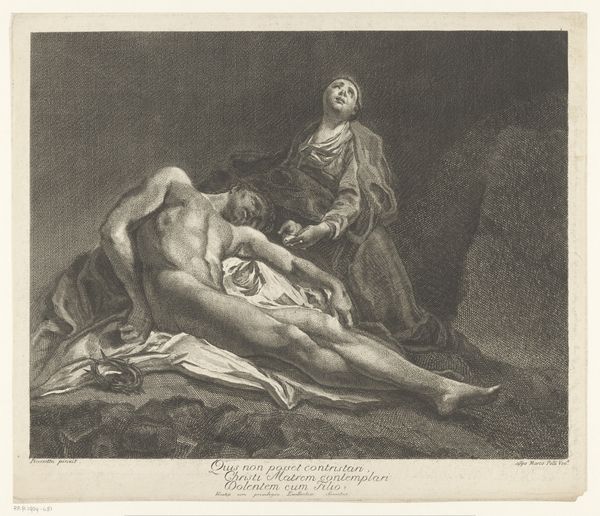
Dimensions: height 450 mm, width 631 mm
Copyright: Rijks Museum: Open Domain
Editor: Here we have Henri Fantin-Latour's 1883 etching, "Klingsor roept Kundry op met een bezwering." It feels like a stage setting, all shadows and drama. What layers do you see in this piece? Curator: It’s a powerful depiction. Fantin-Latour places us right in the heart of Wagner’s *Parsifal*. This isn’t just illustration; it’s an engagement with the opera’s themes of power, seduction, and the male gaze. Klingsor, the magician, dominates the composition on the left, embodying patriarchal control, while Kundry seems summoned against her will, caught in this visual and narrative trap. How does this dynamic speak to you? Editor: I see it as imbalanced. He is dark, she's almost ethereal. Is Fantin-Latour making a commentary about women in these narratives? Curator: Absolutely. Fantin-Latour utilizes his etching skills to present us with light/dark dichotomies. Kundry embodies the contradictions of women’s roles, a blend of temptress and victim under the male figure, here, in control. Fantin-Latour encourages us to dissect how societal frameworks and masculine viewpoints frequently imprison female figures. Editor: That's powerful, I didn't look at it that way at first glance. Curator: Art, at its core, fosters essential dialogue. Examining cultural perspectives gives insight into not just Wagner's work, but larger societal depictions and frequently gendered limitations, in tales from the past. Editor: It’s so interesting how placing the work in context deepens the emotional impact. Thanks. Curator: And thanks for posing such insightful questions; it illuminates the value in linking art to our broader culture, too!
Comments
No comments
Be the first to comment and join the conversation on the ultimate creative platform.
